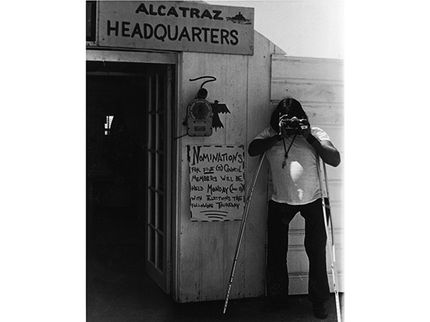From the stunning Golden Gate Bridge to the iconic Fisherman’s Wharf, the City by the Bay is a beauty to behold. But just one and a half miles off San Francisco’s foggy coast lives an ugly truth: the island of Alcatraz.
Now a popular tourist attraction owned and operated by the U.S. National Park Service, the island is home to the legendary penitentiary. But before the locale turned into a breeding ground for some of the world’s most incorrigible prisoners, it was occupied by Native Americans.
The Ohlone Indians were the first to visit the island before the Spanish explorers in 1775. Alcatraz was so named for the masses of birdlife found there (alcatraz is the archaic Spanish word for “pelican”). It later was used as a U.S. military prison housing Civil War prisoners before being taken over by the federal government in 1933.
Known as The Rock, Alcatraz’s biggest attraction is the infamous, now-inactive federal penitentiary, which housed many notorious inmates from 1934 to 1963. The island, itself, is actually the tip of a mountain buried by rising sea levels over thousands of years and is surrounded by treacherous, freezing currents that pull toward the shark-infested waters of the Pacific Ocean. Making it kind of perfect for imprisoning criminals.

Mrs Mae Capone, wife of America’s best-known gangster Al Capone, walks up the gangplank of the Alcatraz Island boat to visit her husband on the Island prison in San Francisco bay, 1938.
Prisoners – the most notable being Prohibition gangster Al “Scarface” Capone – and those who refused to conform at other jails were sent to the barren isle, with no hope for escape (see: the aforementioned shark-infested waters). Some even say the prison is haunted by the tortured souls of its former inmates.
Desolate life on the island broke down even the hardest of criminals. Used to playing the role of boss, Capone failed to control Warden James Johnston, admitting to Johnston, “It looks like Alcatraz has got me licked.”
Robert “Birdman of Alcatraz” Stroud, who found respite in canaries, actually had his birdie privileges taken away when he was transferred to this prison. So instead, he studied and wrote two books on the penal system.
Other former gangsters readily succumbed to the system and became model prisoners, too. “Machine Gun” Kelly served as an altar boy and earned the nickname “Pop Gun” Kelly. Perhaps it was more than the harsh conditions of the maximum-security slammer – like the grub. While in operation, Alcatraz was known to have the best food (beef potpie anglaise, baked meat croquettes, iced cupcakes) with ingredients flown in fresh daily.

An inmate worker distributes trays near the steam table. Bars separate the kitchen from the mess hall. circa 1951
Of course, while suffering through the solitude, many inmates dreamed of escape. There were a total of 14 attempts, involving 36 prisoners. Every attempt, except for one, ended in either death or recapture.
In June of 1962, three inmates, Frank Morris, John Anglin, and Clarence Anglin, escaped on a makeshift raft made of rubber raincoats, leaving behind papier-mache heads in their beds. To this day, they have never been found, and many speculate they may have survived.

Model of inmate Clarence Anglin’s head. This head was constructed to show the right side of the face only when placed in a cell bed. The face was reconstructed in 1981.
Still, one man couldn’t wait to return. The infamous James “Whitey” Bulger (keep an eye out for the film Black Mass, which is based on Bulger, out September 18) was incarcerated at Alcatraz from 1959 to 1965. He visited as a tourist in the ‘90s for a photo op with his girlfriend reportedly while he was on the run from the FBI.
After a 29-year run, the maximum security prison closed its doors on March 21, 1963, on grounds that it was too costly to repair and maintain. With the federal land abandoned, a group of Native Americans called the Indians of All Tribes attempted to reclaim the land and turn it into a cultural hub. The Occupation of Alcatraz lasted 19 months from November 1969 to June 1971, with The Black Panthers, celebrities like Anthony Quinn and Jane Fonda, and countless others offering assistance as the government blocked access and shut off electricity.

A Native American man on crutches takes a picture during a takeover of Alcatraz Island by a group of Native Americans, San Francisco, California, June 1970.
The U.S. government forcibly ended the occupation as it turned violent, and according to an article in the San Francisco Gate, the “Members of the local Ohlone tribe even wrote a letter accusing these ‘foreign Indians’ of trespassing. In Ohlone tradition, Alcatraz is cursed and should be used only for exiles.”
Despite its end, the occupation was considered a success in that it brought hope and newfound strength to the Native American movement.
Today, you can brave the rocky (ferry) voyage to Alcatraz Island via Pier 33 on Fisherman’s Wharf. Or you can go all in with the Escape from Alcatraz Triathalon in the spirit of Frank Morris and company.
Photos: AFP / Getty Images; OFF / AFP / Getty Images; Darlyne Sheppard Alcatraz Photo Collection / Museum Collections at Alcatraz Island; Museum Collections at Alcatraz Island; Hulton Archive / Getty Images
